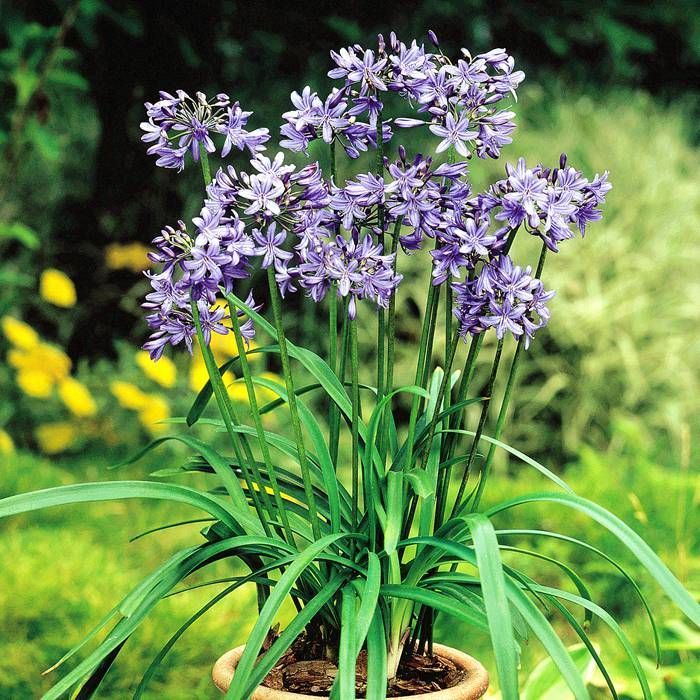Magnificent Agapanthus: Enhancing Your Garden's Appeal
Magnificent Agapanthus: Enhancing Your Garden's Appeal
Blog Article
Understanding the Art of Agapanthus Treatment: Crucial Actions for Healthy And Balanced Growth and Lively Flowers
In the realm of cultivation, the farming of agapanthus stands as a fulfilling endeavor for those who look for to nurture these stylish blooming plants. From picking the right range to understanding trimming techniques, the trip towards cultivating growing agapanthus plants is diverse and holds the essential to unlocking the complete potential of these organic gems.

Selecting the Right Agapanthus Range

When picking the ideal Agapanthus selection for your yard, think about factors such as environment suitability, bloom shade, and development habit. Additionally, think about the environment in your region to make certain the Agapanthus range you choose can grow in your particular conditions. Recognizing the growth behavior of different Agapanthus ranges is critical for proper positioning within your yard.
Perfect Growing Conditions
Taking into consideration the optimum ecological demands is vital for effective Agapanthus growing. Agapanthus flourishes in well-draining dirt with a slightly acidic to neutral pH degree. When growing, pick an area that receives full sunlight to partial color. In hotter climates, offering some afternoon shade can protect against scorching of the leaves. Agapanthus plants are delicate to chilly temperature levels and should be safeguarded from frost throughout winter season.
To make sure healthy growth and lively flowers, plant Agapanthus bulbs at a depth of concerning 2-4 inches and space them 8-12 inches apart. Mulching around the base of the plants helps keep dampness and reduces weed growth.
Watering and Fertilizing Tips
Keeping correct wetness degrees and offering essential nutrients are vital components in the care routine for Agapanthus plants. When it comes to sprinkling Agapanthus, it is vital to strike an equilibrium. These plants favor constantly wet soil but are susceptible to root rot if overwatered.
Feeding Agapanthus is necessary for promoting healthy and balanced development and respected blooms. Use a well balanced fertilizer, such as a 10-10-10 formula, in the early springtime as new development arises. By following these watering and fertilizing tips, you can guarantee your Agapanthus plants prosper and generate vibrant, lasting flowers.
Trimming Methods for Agapanthus
Trimming Agapanthus plants at the ideal times and with proper methods is essential for maintaining their health and wellness and promoting optimal growth and flowering. The ideal time to trim Agapanthus remains in late winter or early springtime before brand-new growth arises. Beginning by eliminating any kind of yellowing or dead fallen leaves near the base of the plant. Cut them as short as feasible without damaging the arising shoots.
Deadheading spent blossoms can likewise redirect the plant's power into producing more blossoms instead than setting seeds. If you desire to gather seeds for proliferation, leave some flowers to fully grown and completely dry on the plant.
Remember to utilize clean, sharp devices to make exact cuts and decrease the risk of introducing conditions. Agapanthus. Routine pruning will certainly help keep your Agapanthus looking healthy and balanced and cool while ensuring a bountiful display screen of attractive blossoms
Handling Usual Bugs and Diseases
After ensuring appropriate trimming techniques for Agapanthus, it is necessary to resolve typical pests and illness that can influence the health and wellness and vigor of these plants. One typical parasite that affects Agapanthus is the Agapanthus gall midge.
An additional common issue is fungal leaf place, which offers as dark lesions on the leaves. To avoid fungal illness, make certain good air flow around the plants, stay clear of above watering, and eliminate any contaminated fallen leaves promptly. Furthermore, Agapanthus additional reading plants can deal with root rot if they are grown in inadequately draining dirt. To stop this, plant Agapanthus in well-draining soil and prevent overwatering. By being cautious and taking prompt activity against illness and bugs, you can aid your Agapanthus plants thrive and generate vibrant blooms.
:max_bytes(150000):strip_icc()/agapanthus-growing-guide-7368912_hero-a3585e4f9ffe4b99a73c7ad8eb4ebe48.jpg)
Conclusion
In conclusion, understanding the art of agapanthus treatment includes selecting the appropriate selection, offering optimal planting problems, appropriate watering and fertilizing, proper trimming methods, and resolving common pests and conditions. By adhering to these crucial actions, you can make sure healthy and balanced growth and vivid blooms for your agapanthus plants. Remember to regularly monitor and preserve your plants to advertise their general wellness and longevity.
To make certain healthy growth and vivid blossoms, plant Agapanthus bulbs at a deepness of regarding 2-4 inches and room them 8-12 inches apart. By complying with these watering visite site and feeding ideas, you can ensure your Agapanthus plants grow and create click reference vibrant, durable blossoms.
One common bug that impacts Agapanthus is the Agapanthus gall midge. In addition, Agapanthus plants can suffer from origin rot if they are grown in poorly draining pipes dirt. By complying with these essential steps, you can ensure healthy and balanced development and lively blooms for your agapanthus plants.
Report this page